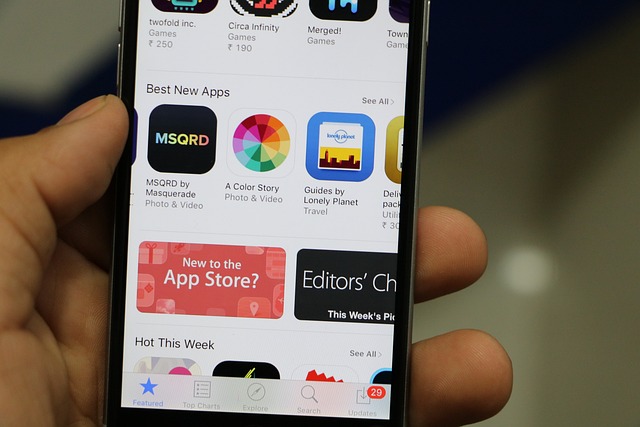
In an era where technology continuously evolves, generating passive income through apps and software has become an accessible and lucrative avenue for many. This guide will explore various ways to achieve passive income from apps and software, the steps involved, and some real-world examples to inspire you.
Understanding Passive Income
Before diving into how apps and software can generate passive income, it’s important to understand what passive income entails. Passive income is money earned with minimal effort or ongoing involvement. Unlike active income, where you exchange time for money (such as a traditional job), passive income allows you to earn money through investments or ventures that require little to no daily effort.
Key Characteristics of Passive Income:
- Initial Effort: Significant effort or investment is usually required at the beginning.
- Ongoing Revenue: Once established, it continues to generate income with minimal ongoing effort.
- Scalability: Potential to grow without a proportional increase in effort or time.
Revenue Models for Apps and Software
There are several revenue models through which apps and software can generate passive income. Understanding these models will help you choose the best approach for your goals.
1. Freemium Model
The freemium model offers a basic version of the app or software for free while charging for premium features or functionalities. This model attracts a large user base, some of whom may opt to upgrade to the paid version for enhanced features.
Example:
- Dropbox: Offers free storage with the option to purchase additional space and features.
2. Subscription Model
With the subscription model, users pay a recurring fee to access the app or software. This can be a monthly, quarterly, or annual fee. Subscriptions provide a steady stream of income and can be used for both apps and software.
Example:
- Spotify: Provides a free tier with ads and a premium subscription that removes ads and adds features.
3. In-App Purchases
Apps can offer additional features or content through in-app purchases. This model is commonly used in mobile games where users can buy virtual goods, extra levels, or enhancements.
Example:
- Candy Crush Saga: Offers in-game purchases for boosters and additional lives.
4. Advertising Revenue
Apps and software can generate income through advertising. This involves displaying ads within the app or software and earning revenue based on impressions or clicks.
Example:
- Angry Birds: Uses in-app ads and offers ad-free versions for a fee.
5. Affiliate Marketing
Affiliate marketing involves promoting third-party products or services within your app or software. You earn a commission for each sale or lead generated through your affiliate links.
Example:
- Fitness Apps: Promoting workout gear or supplements and earning a commission on sales.
6. Licensing
Licensing involves allowing other companies to use your app or software in exchange for a licensing fee. This can be a one-time payment or recurring fees.
Example:
- Software Development Kits (SDKs): Developers may license their SDKs to other companies for integration into their products.
7. Selling Data or Analytics
Some apps and software generate revenue by selling anonymized user data or providing analytics services. This model is often used in B2B applications.
Example:
- Google Analytics: Provides detailed data insights, which can be monetized through partnerships and advanced analytics offerings.
Steps to Create Passive Income from Apps and Software
Creating passive income from apps and software involves several key steps. Here’s a roadmap to guide you:
1. Identify a Niche
Find a niche or problem that has demand but lacks adequate solutions. Research market trends, user needs, and potential gaps. Tools like Google Trends, industry reports, and forums can provide valuable insights.
2. Develop Your Idea
Create a detailed plan for your app or software. This includes defining its core features, target audience, and unique selling points. You may need to create wireframes, prototypes, or MVPs (Minimum Viable Products) to validate your idea.
3. Build Your App or Software
Depending on your technical expertise, you can either develop the app or software yourself or hire a development team. Consider factors like platform compatibility (iOS, Android, web), user experience, and scalability.
4. Launch and Market
Once your app or software is developed, launch it on appropriate platforms (App Store, Google Play, etc.). Create a marketing strategy that includes social media, content marketing, influencer partnerships, and SEO to drive traffic and attract users.
5. Monetize
Implement one or more of the revenue models discussed earlier. Ensure that your monetization strategy aligns with your target audience and provides value to users.
6. Monitor and Optimize
After launching, monitor user feedback, app performance, and revenue metrics. Continuously optimize the app or software based on user reviews and analytics. Regular updates and improvements can enhance user experience and retention.
7. Scale
Once your app or software starts generating consistent revenue, consider scaling it. This could involve expanding to new markets, adding new features, or exploring additional monetization options.
Examples of Successful Passive Income Apps and Software
Here are a few examples of successful passive income-generating apps and software:
1. Evernote
Evernote is a note-taking app that uses a freemium model. Users can access basic features for free and upgrade to a premium version with advanced features. The app has generated significant revenue through subscriptions and in-app purchases.
2. WordPress
WordPress is a content management system that offers both free and paid themes and plugins. Developers earn passive income by selling premium themes and plugins or through affiliate marketing.
3. Zoom
Zoom, a video conferencing software, offers a freemium model with basic features for free and premium subscriptions for advanced functionalities. The company generates substantial revenue from its subscription plans.
4. Headspace
Headspace, a meditation and wellness app, uses a subscription model. It offers free guided meditations and charges for access to premium content and features. The app has achieved significant passive income through its subscription fees.
Challenges and Considerations
While passive income from apps and software can be highly rewarding, it’s essential to be aware of potential challenges:
1. Market Saturation
The app and software markets are highly competitive. Differentiating your product and achieving visibility can be challenging. Conduct thorough market research and focus on providing unique value to stand out.
2. Initial Investment
Developing high-quality apps or software often requires a significant initial investment in development, marketing, and ongoing maintenance. Ensure you have a clear budget and financial plan.
3. Security and Privacy
Handling user data securely is crucial. Ensure that your app or software complies with data protection regulations and implements robust security measures to protect user information.
4. Ongoing Maintenance
Even though passive income requires minimal ongoing effort, regular updates and maintenance are necessary to keep the app or software functional and secure. Plan for periodic updates and bug fixes.





